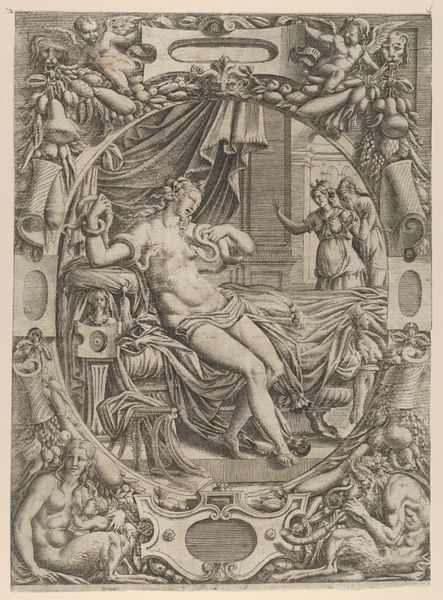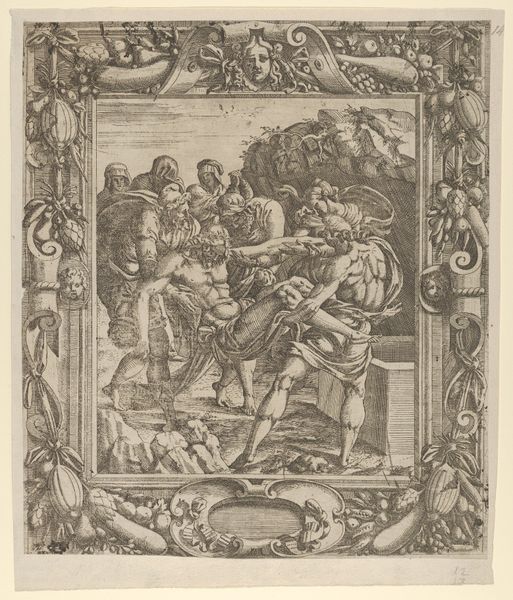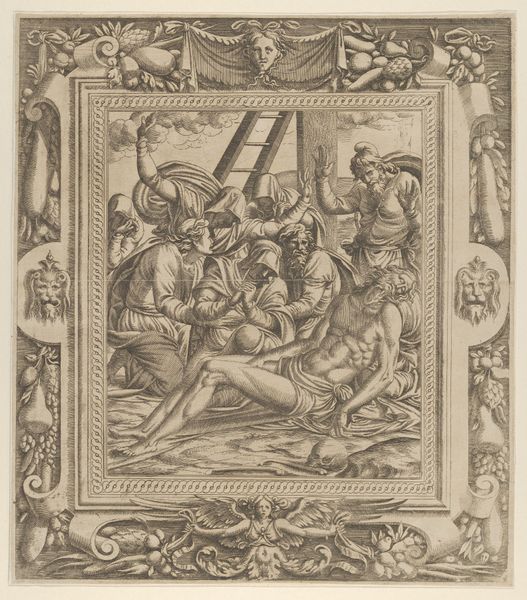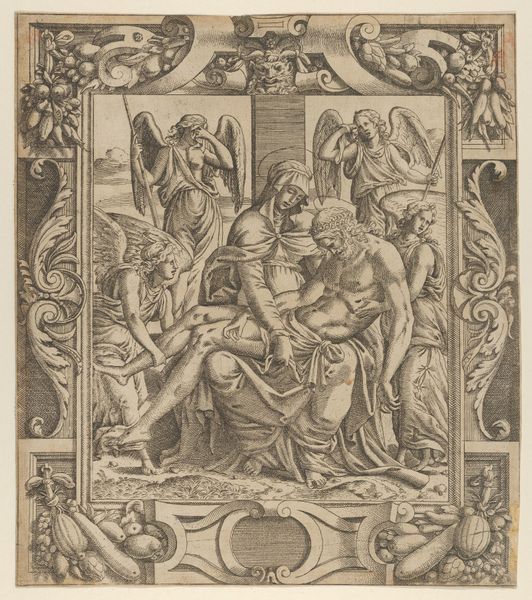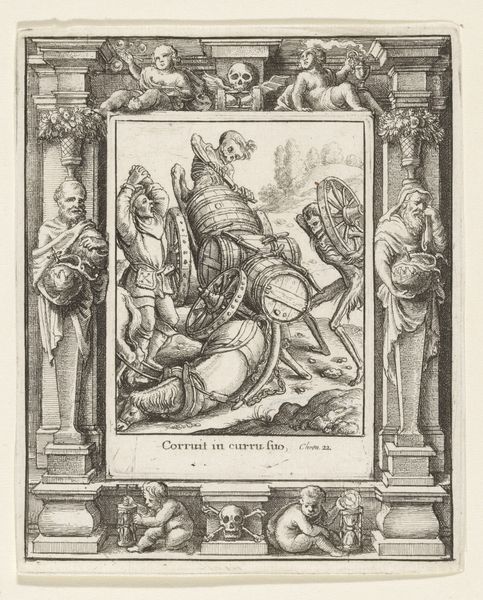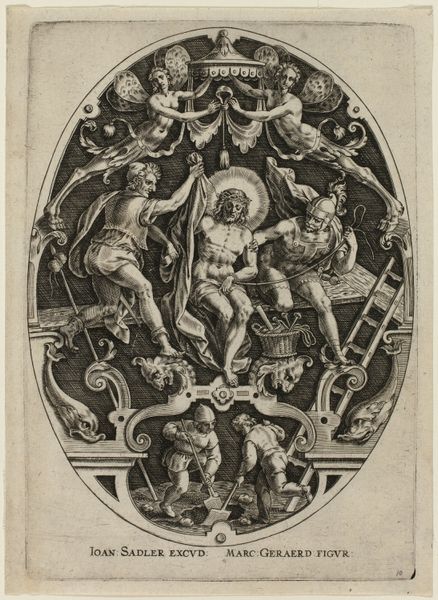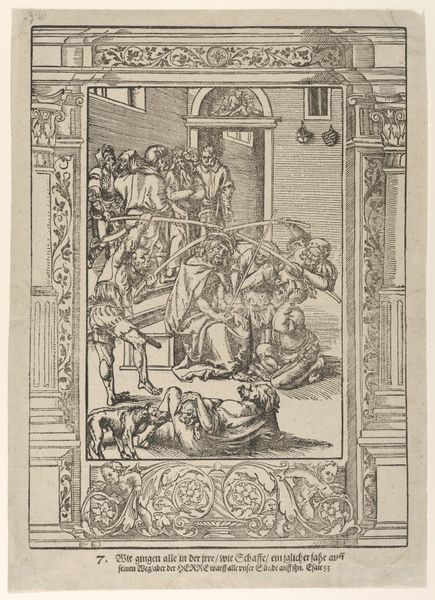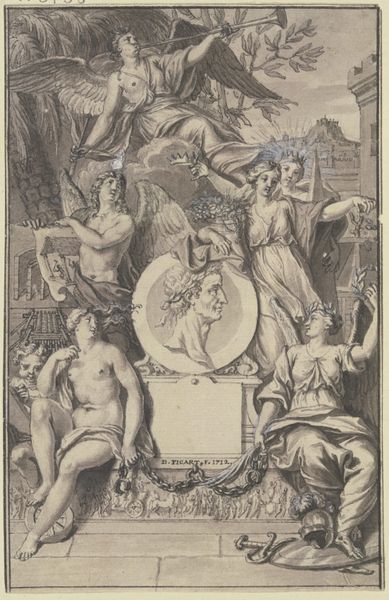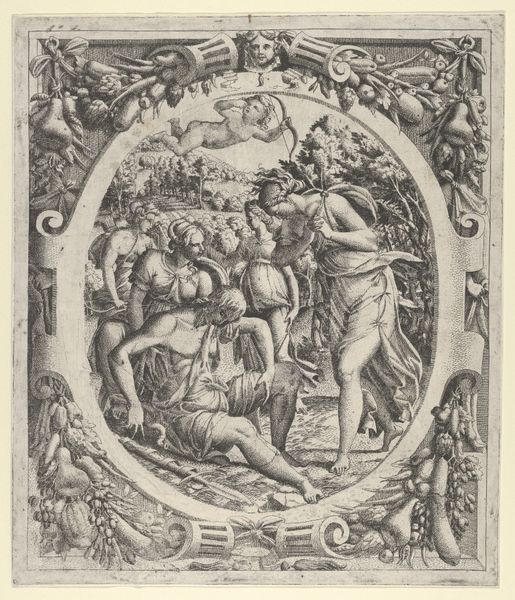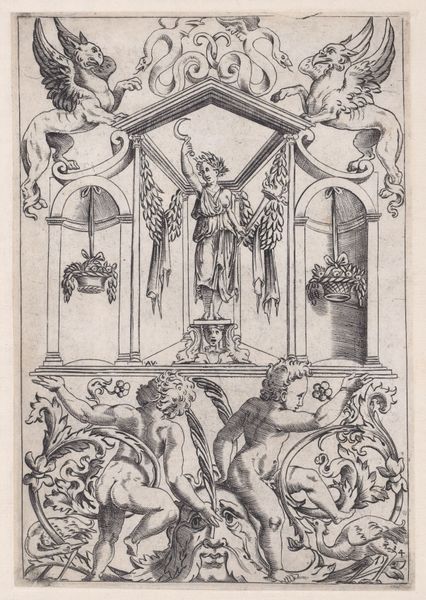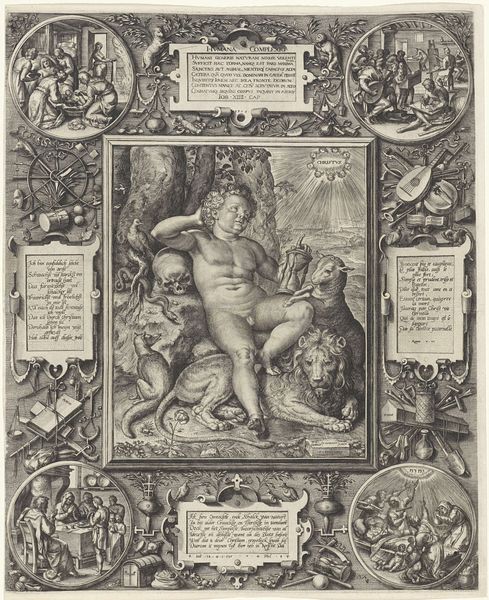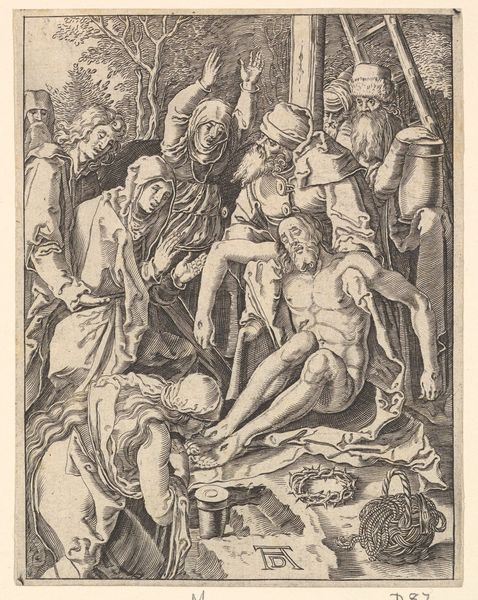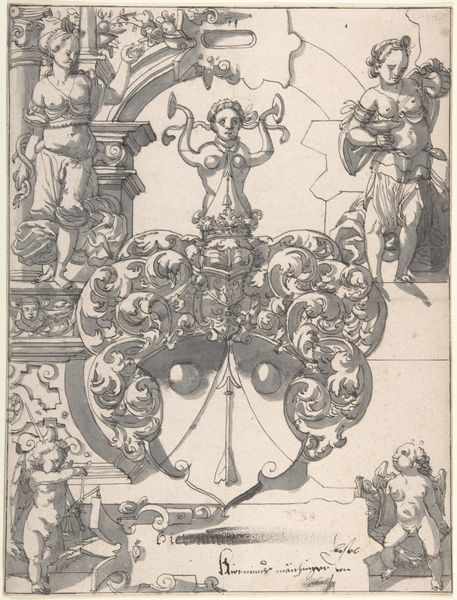
drawing, print, intaglio, engraving
#
drawing
#
pen drawing
# print
#
death
#
intaglio
#
figuration
#
11_renaissance
#
cross
#
history-painting
#
italian-renaissance
#
engraving
#
virgin-mary
#
christ
Dimensions: Sheet (trimmed): 12 13/16 × 11 1/8 in. (32.6 × 28.3 cm)
Copyright: Public Domain
Jean Mignon created this print, "Christ's Deposition from the Cross," in the mid-16th century. It’s made using etching, a printmaking technique that allows for incredibly fine, detailed lines. Look closely, and you can see how Mignon used these lines to create a sense of depth, shadow, and texture, particularly in the bodies and draperies. The process begins with a metal plate covered in a waxy, acid-resistant coating. The artist then draws through this coating, exposing the metal. When acid is applied, it bites into the exposed lines, creating grooves. Ink is then applied to the plate, filling these grooves, and the excess is wiped away. Finally, the plate is pressed onto paper, transferring the image. The incredible detail achieved through etching made prints like these highly sought after during the Renaissance, allowing for wider distribution of images and ideas. The craft of printmaking became not just a way to reproduce art, but an art form in itself. In Mignon's hands, the etching needle becomes a tool for exploring emotional depth and artistic expression.
Comments
No comments
Be the first to comment and join the conversation on the ultimate creative platform.
